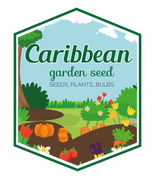
hemerocallis, Rajah daylily, BAREROOT
- Get free shipping to lower 48 states on orders $54.95+ (Most Items), excluding live plants, plant bulbs, and black plastic nursery crate.
- Most orders are processed by the next day
- Select your desired size and/or color from the available options.
English Cottage, Meadow, Mediterranean, Ranch, Seascape, Spanish, Tropical, Wild Garden, Woodland
This re-blooming daylily makes a long-lasting statement with apricot-yellow flowers and bold, dramatic, dark-red centers. Fall Color, Showy Flowers.Rajah' _ 'Rajah' is a clump-forming, deciduous perennial with arching, broadly linear, dark green leaves and, in summer, sturdy scapes bearing large, trumpet-shaped, orange flowers with red zones and yellow throats.
We recommend watering the Daylily immediately upon planting them. Daylilies do not like to get dried out, but they do not like to be kept in a soggy environment. Unless you are in an extremely dry climate, regular watering after planting is unnecessary. As is common, Daylilies prefer a heavy watering once a week as opposed to a daily light watering.
Regularly weed the area around the plant to avoid root confusion when you go to transplant or separate your bulbs.
Remove dead blooms and leaves if you prefer a manicured appearance. In the late fall, trim the remaining dead leaves down to ground level, and place mulch on top of the root system to protect the roots from cold freezing winter month temperatures.
In the north, spring planting is advised. In colder climates, if daylilies are planted in the fall, they often die because they do not have time to form new roots and begin to anchor before winter arrives. Some experienced gardeners in the north will fall plant, but they consider the hardiness of the plant and take preventive measures like mulching.
In the south, the best times to plant are early spring or very late fall. Note that daylilies planted in July-September face a high probability of rotting if humidity and temperatures are high (i.e. over 90 degrees).
LET OUR CUSTOMER SPEAK FOR US

![[Seeds] - Caribbeangardenseed](http://caribbeangardenseed.com/cdn/shop/files/gift-card-gift-card-1_1024x1024_dfa857db-9150-4315-a362-7f0bb3fb9c47_60x28.png?v=1722895789)








